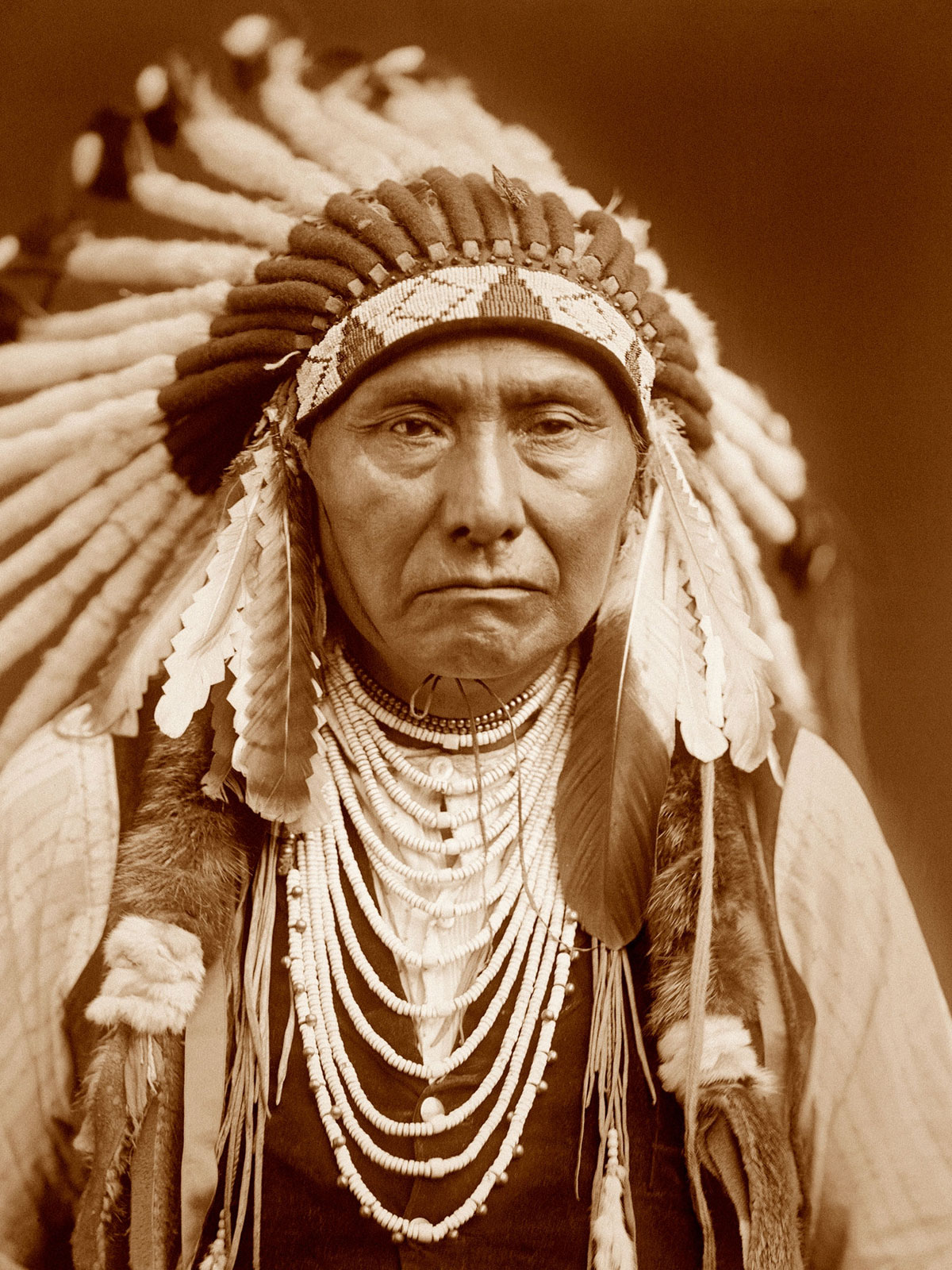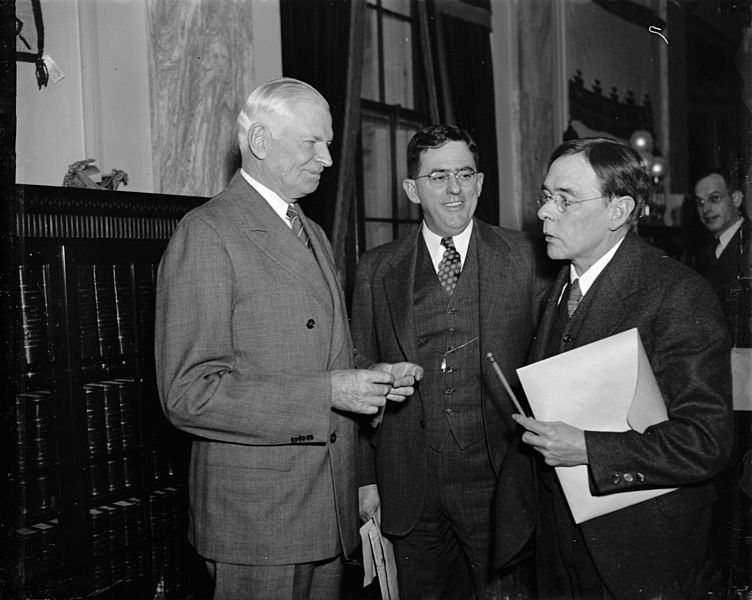 |
| North American Indian |
By 1929 the situation on the reservations was disastrous Over ninety million acres of land had gone out of Indian ownership, and the once-prosperous tribesmen were reduced to desperate paupers holding a shrinking island of virtually worthless land. Studies by Congressional committees indicated that unless federal policy were radically reoriented, the reservations would become death-traps for those who remained on them; at the same time, those who left, without training, totally incapable of supporting themselves, would form a tragic remnant huddled in the backwaters of urban areas.
 |
| John Collier (right), Elmer Thomas (left), and Claude M. Hirst (center) |
In 1934 John Collier, Frankin Roosevelt's Commissioner of Indian Affairs, introduced the Indian Reorganization Act, which was quickly written into law. The basic aim of the legislation was to support native culture and reverse the policy of forced assimilation of individual Indians. Under the new I.R.A. provisions, native religions which had been banned for nearly half a century were recognized as valid and proper. Economic-development corporations and land-consolidation programs were begun by reservation peoples to stop the erosion of the land base, develop a source of tribal income and provide employment fo the reservation residents.
The innovations of the Collier years were startling. For nearly three centuries white Americans had blithely accepted the premise that the American Indian was a vanishing race. His culture, while colourful and unusual to western Europeans, was thought to be forever crushed by the inroad of civilization. Most of the people who had been working in the field of Indian affairs saw the Collier years as a return to the primitive and savage state. Missionaries viewed his tolerance of native religions as the work of the Antichrist. Conservatives looked askance as tribal governments were set up which held the land in common ownership. To some it was the beginning of Communist intrusion into American political affairs.
 |
| American Indian tents |
 Twitter
Twitter Facebook
Facebook Flickr
Flickr RSS
RSS
0 comments: (+add yours?)
Post a Comment